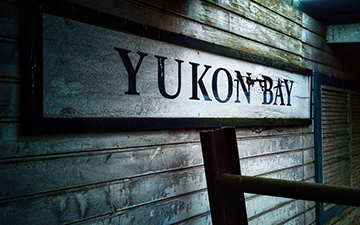Property taxes in Whitehorse, explained

The Yukon calculates property taxes differently than in other parts of Canada, primarily due to a lack of data, which impairs market value assessments
WHITEHORSE, May 4, 2025 – Picture this: you’ve just received your property tax notice in the mail, and you are wondering how the City of Whitehorse arrived at that number — be it higher or lower than what you think you should be paying.
Property taxes in the Yukon are calculated a little differently than they are down south. In Whitehorse, city council recently approved a budget that would see a 4.62 per cent to the current property tax rate. But there’s a lot hiding behind that number on your property tax notice.
Property taxes are decided by a relatively simple equation: the tax rate (like 1.123 per cent in Whitehorse) is leveraged on the assessed value of a property, according to Bradley Rowett, the director of property assessment and taxation with YG.
Therefore, a house with the assessed value of $300,000 would be paying $3,369 annually in property taxes.
Property taxes, against common conception, don’t just go to the services and infrastructure within the neighbourhood you are paying those taxes, said Svetlana Erickson, Whitehorse’s manager of finances.
“The property taxation in general is a way for for the city to generate the revenue by taxing property owners based on the assessment values of their properties,” said Erickson.
She said the collected taxes go into the general revenue fund for the city — which pays for city-wide services and infrastructure.
Property assessment values — which are used to calculate how much property tax a given property is owing — come from the Yukon government.
Bradley Rowett is the director of property assessment and taxation with YG. He told the News that the government assesses properties on two factors: the value of the land, and the value of any building, like your house, on that land.
Properties in both municipalities and unincorporated communities get assessed every two years, said Rowett. During those assessments, they’ll look at the value of land based on recent sales as of July 2, he said. That informs their decision of whether or not the department will increase land values broadly within a municipality, he said.
Base rates are used to help establish cost per square meter, costs which are derived from studies done in the summer, he said.
As part of the assessment, the department will also consider inflation, looking at the cost of materials and labour it takes to build a house, said Rowett. That consideration is applied to land values, so people generally see an increase to the assessed value of their home just based on inflation, said Rowett.
The department also does site inspections: picking one of the larger neighbourhoods in a municipality, and going door to door talking to property owners and taking measurements, he said.
One sticky issue that tends to come up in conversations around property taxes in the Yukon is the difference in taxes paid between neighbourhoods: the inequality even came up during the public hearing for the City of Whitehorse’s operations budget earlier this year.
Land values will vary depending on where you are located in a particular neighbourhood, said Rowett: land values in downtown Whitehorse tend to be higher, but the lot sizes are fairly small, he said.
The age of a given building also has significant influence on the assessed property value assigned to a home, said Rowett.
“When we're valuing improvements, what we're actually doing is we're calculating the replacement cost as brand new, as if it was built in Whitehorse,” said Rowett. Even if a house is located elsewhere — Faro, for example — the replacement cost is still based on the cost it would take to build that house completely in Whitehorse.
Hence, depreciation of any given building will lower that replacement cost, which is where the discrepancy between neighbourhoods comes from, said Rowett.
“What ends up happening often is some of the older structures which you're going to find in, like Riverdale, Porter Creek, some of the older neighborhoods are going to have a lower improvement value than those that you're going to find in Whistle Bend, and that's because most of the houses you'll find in Whistle Bend are brand new construction,” said Rowett.
“So the replacement cost to replace a brand new structure is going to be significantly more than an older home, theoretically, to replace it to the same point of where it was at.”
“So when it comes down to who pays more in taxes? It would be true that someone in Whistle Bend likely would be paying some more than someone in Riverdale based on those assessed values, because the house in Riverdale is so heavily depreciated because it is so much older,” said Rowett. He added that the assessors use industry standards and depreciation schedules to guide decisions about replacement cost values.
Other jurisdictions in the country take a different method: according to BC Assessment, which assesses properties in British Columbia, they primarily use market value when determining property values. Properties are categorized based on class (e.g., light industry, residential, supportive housing, etc.). Then, the assessors compare the change in your property value with the change in value across the property class in your municipality.
If a home has a change in property value that is out of step with the rest of the property class, then it will have an impact on property taxes. So, for example, if your house was previously assessed at $450,000, and is now $540,000, that’s a 20 per cent increase in value. If the property class on average saw a 30 per cent increase, your property taxes would likely decrease. On the flip side, if your property value increased more than the average, then you’d likely see an increase in property taxes.
The Yukon does not calculate property values in this way, mind you.
“We use a bit of a combination, because we do use market data to help us determine land values, but primarily when we're looking at improvements, we do replacement costs,” said Rowett. “And the reason why we do replacement costs, which is similar to some of the other smaller jurisdictions, like NWT and Nunavut, is because we don't have enough sales data to necessarily support a market approach.”
Once the Yukon government has determined how much a given property in Whitehorse would cost, they send over preliminary assessments and final assessments to the City of Whitehorse.
Svetlana Erickson, the city’s manager of finances, told the News that once the city receives those numbers, they use them to build the city’s budget for the upcoming year.
The assessed value of each property that comes from the territorial government is then used to calculate the municipal property tax based on the mill rate, said Erickson. The mill rate is another term for property tax rates, and comes from the Latin word for one thousand, said Erickson.
“We rely on property taxes because it's our major source of revenue to fund the essential services such as roads, fire protection, public transit, parks, recreation, etc, and those assessments help us to determine how much tax revenue will be collected,” said Erickson.
The municipal budget planning process looks out how much it will cost to provide those services, she said, and the tax rate that will generate the revenue needed to cover those costs.
“We're not in a for-profit business,” said Erickson. “So we only tax taxpayers the amount needed to provide the service.”
Property owners in the city are expected to pay their property taxes by July 2, said Erickson. Late payments are subject to a 10 per cent penalty, she said.
Talar Stockton is a Local Journalism Initiative Reporter with the Yukon News in Whitehorse, Yukon. Title image by Martin Binais from Pixabay.







(0) Comments